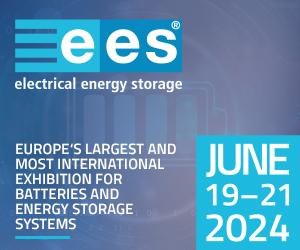The European Technology Platform for Wind Energy (TPWind) has unveiled in its latest Strategic Research Agenda (SRA) that wind power has the potential to meet 28% of the EU consumer’s demand for electricity by 2030.Before this objective can be met, however, the TPWind Secretariat says that both policy-makers and sector players must establish and implement strategic action in technology and policy research.
TPWind outlines in its SRA that wind power development will occur in three phases. Between now and 2020 (i.e. Phase 1), the EU could see wind power meeting almost 15% of the consumers’ needs, with overall installed capacity standing at 180 gigawatt hours. This capacity could expand to 300 gigawatt hours in the period 2020-2030 (i.e. Phase 2). Finally, Phase 3 will focus on strengthening European wind power exports.
The SRA points out that the mobilisation of both industry research and public resources in Europe, to be secured through the coordination of investment at the regional and national levels, can help Europe rise to the challenge of contending with technological and industrial difficulties. This latest SRA offers Europeans a guide to what research priorities and actions must be achieved so as to guarantee power sector development.
A section of the SRA focuses on a Market Deployment Strategy that assesses what can be done to remove market barriers to the extensive use and operation of wind power. Various methods that have been brought to the table include slashing investment costs, enabling access to energy grids and cutting back on red tape.
‘TPWind’s vision and action plan for research, as presented in the SRA, are hugely important steps forward for the future deployment of wind energy in Europe,’ comments TPWind Chairman Henning Kruse. ‘The time has now come to begin putting the action plan to effect, and for this the support of the European Commission and Member States will make all the difference.’
As a facilitator, TPWind provides support for the development of effective EU and national policy targeting stronger markets and technology development cooperation through innovation, and new and existing research and development projects. The upshot is that the work involved will lead to more competitive prices for alternative power production technologies. Launched in 2006 and coordinated by the European Wind Energy Association (EWEA), TPWind is in hot pursuit of identifying research projects and shrinking wind power costs.
Wind power is Europe’s first choice for renewable energy technology particularly because of the rising concerns over what is happening to the planet. Just as significant is the fact that European industry holds the reins in the international market. The depletion of oil and gas, and how climate change is affecting Earth are just some of the issues that continue to trigger headaches not only for the industry and market, but for the general population as well. Latest data indicate that wind power consumption and industrial development will help Europe save almost 600 metric tonnes of carbon dioxide each year.
Europe hot on the heels of wind power development
0
Add A Comment









